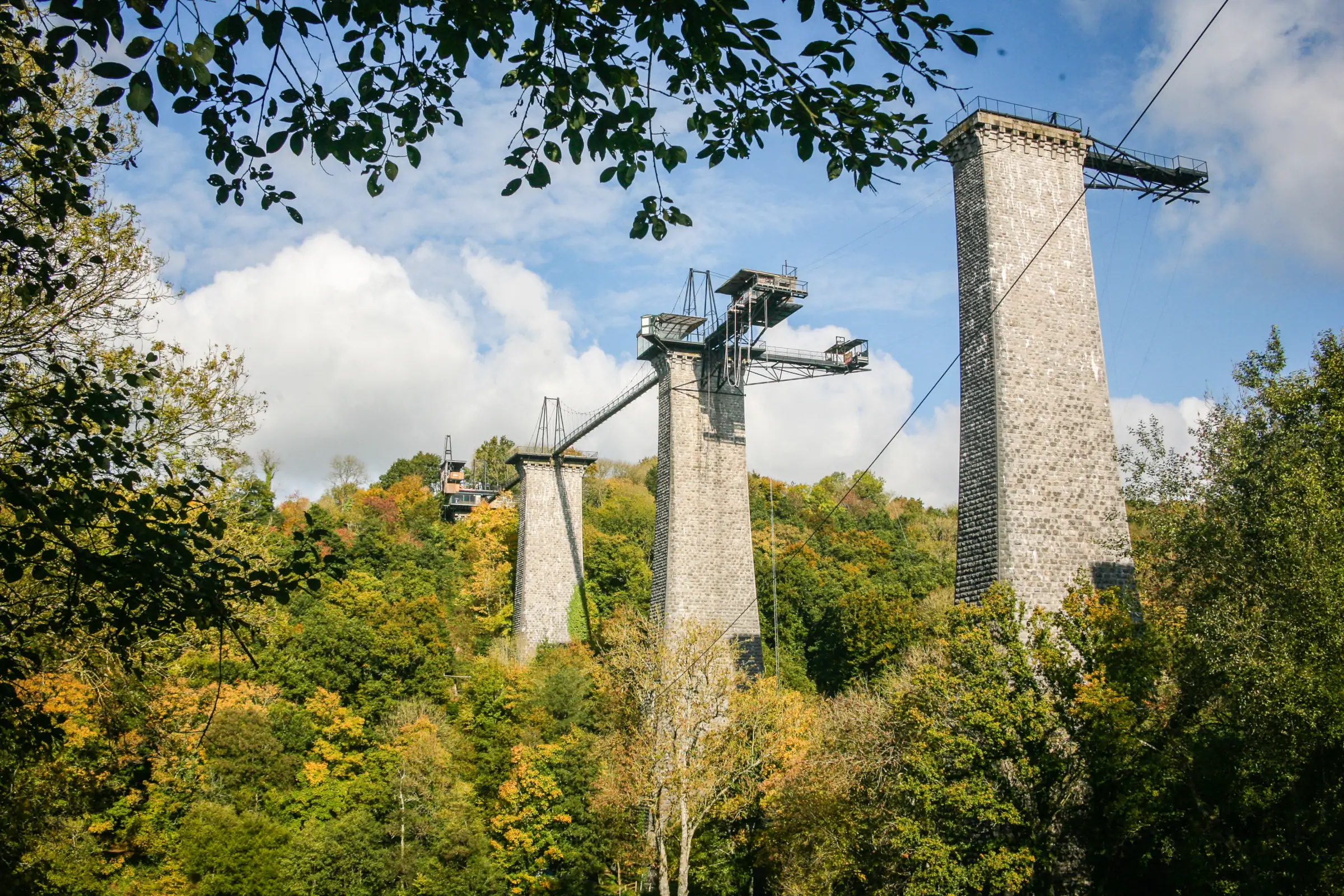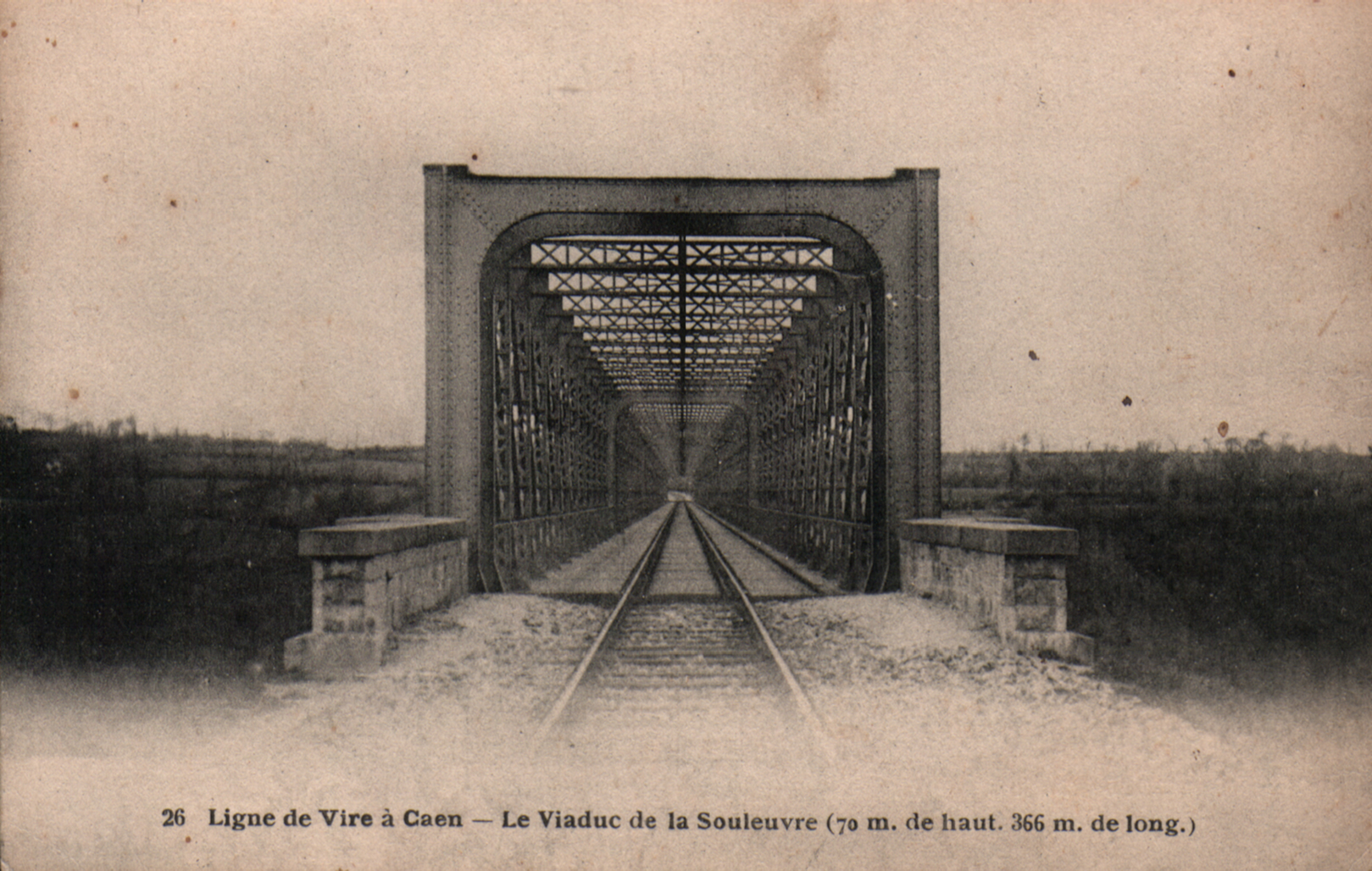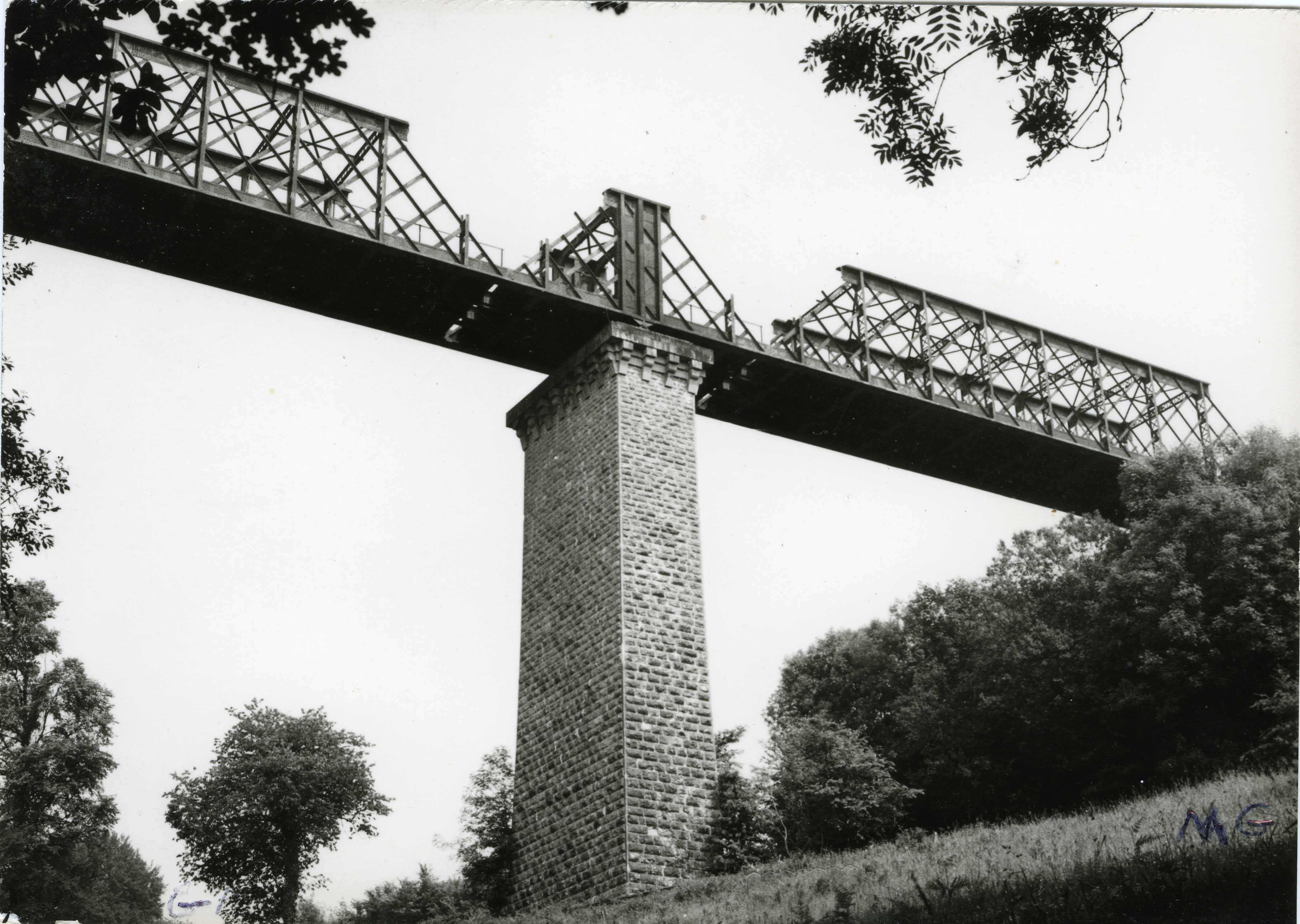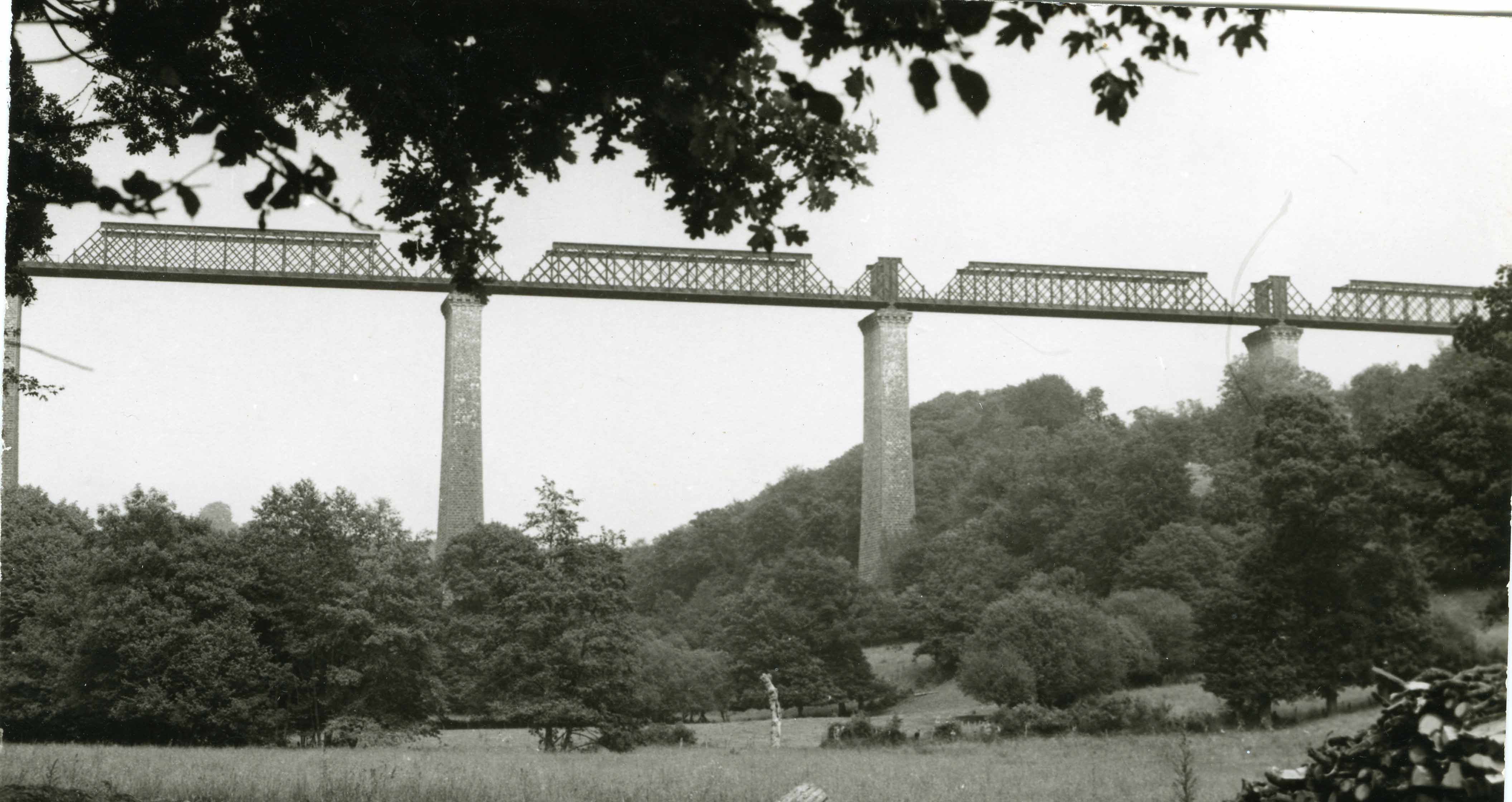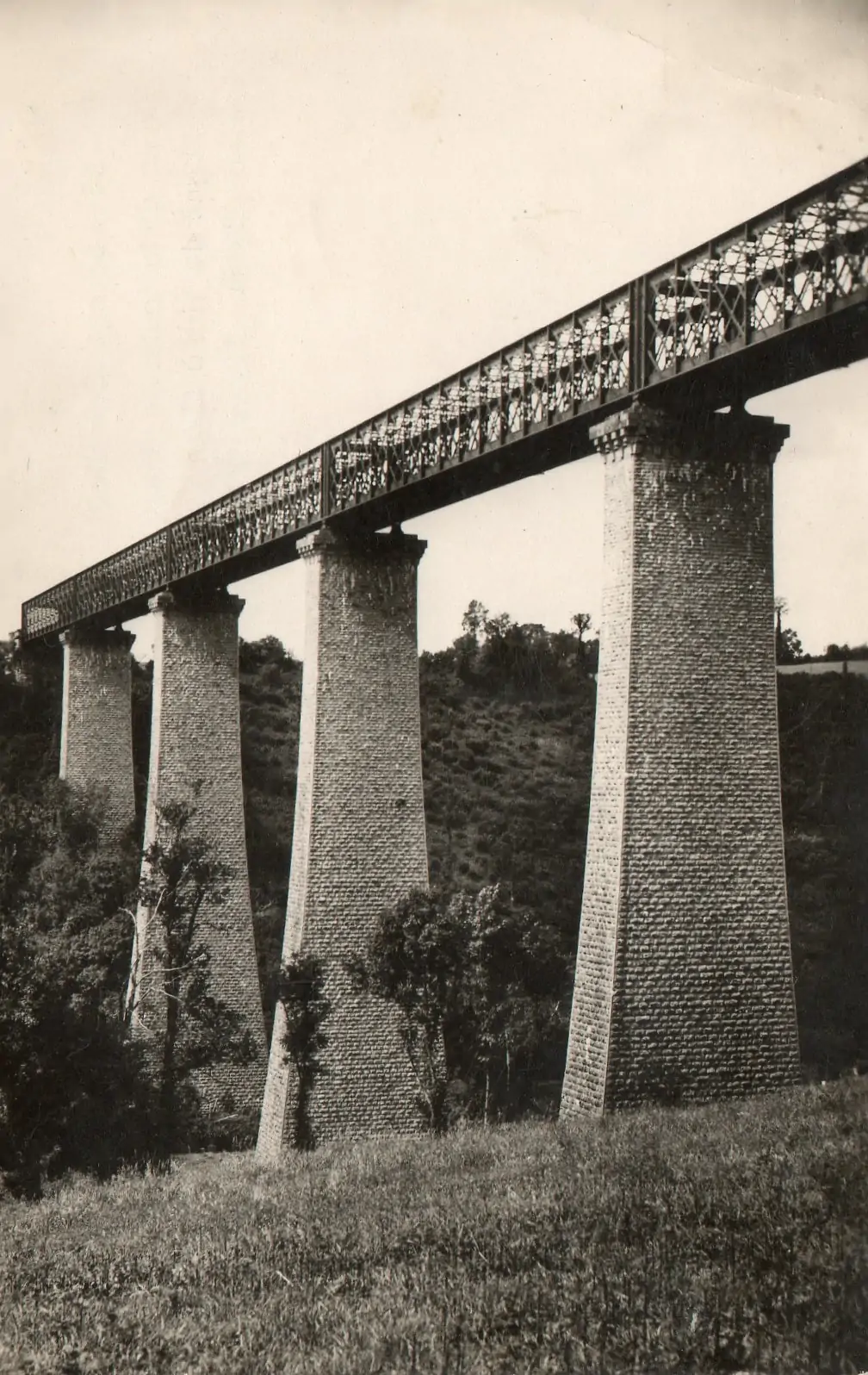

Since
1889
Discover the fascinating history of the Souleuvre Viaduct, a masterpiece of engineering in Normandy. From its construction to its transformation into a business site, explore this iconic site.
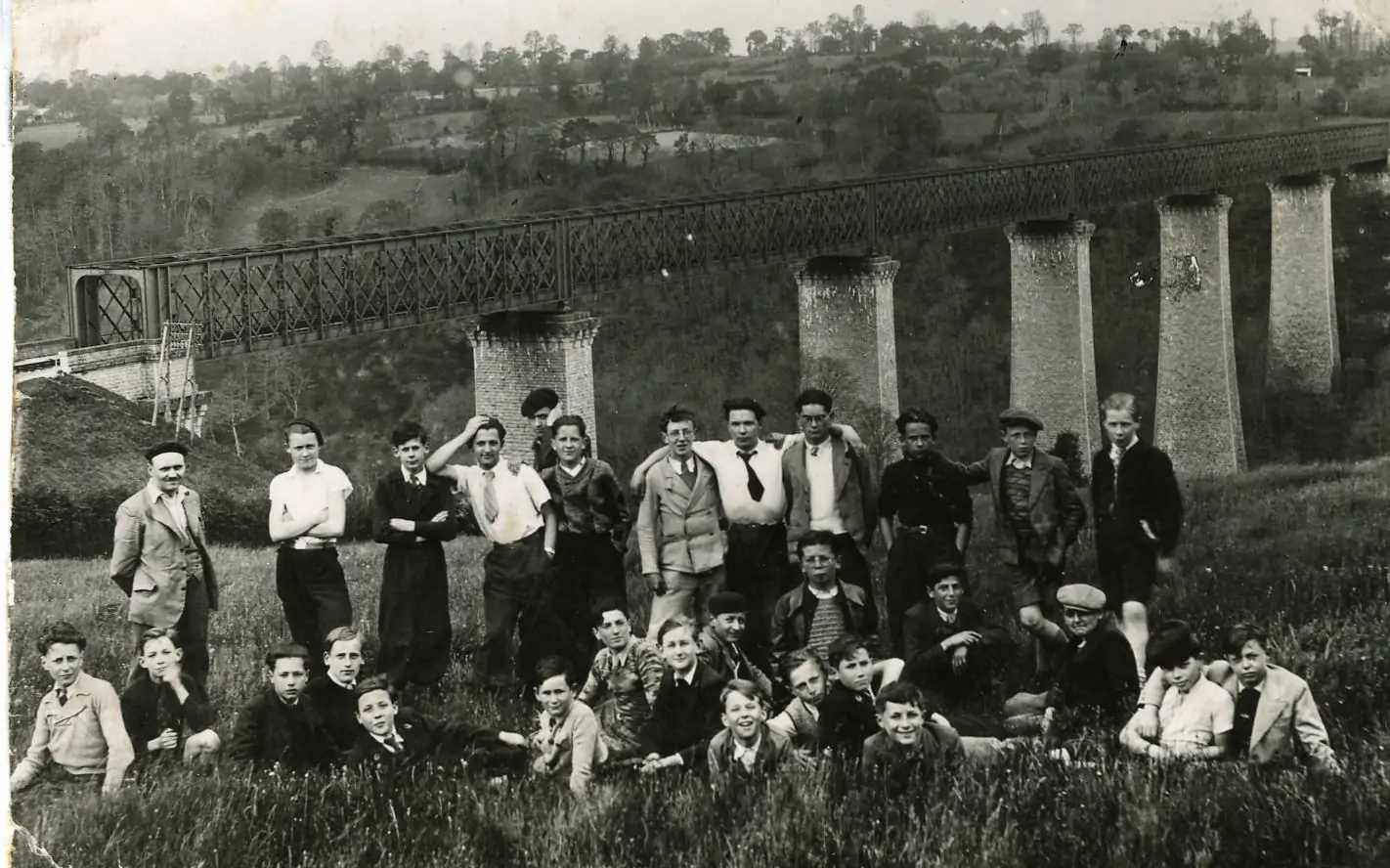
An engineering masterpiece that became a living legend
The Souleuvre Viaduct, inaugurated in 1893 in La Ferrière-Harang, is one of the most emblematic works of art in Normandy’s railway heritage. It was built to cross the valleys of the Normandy countryside on the Caen–Vire line, thanks to a structure combining monumental masonry and metal framework.
Contrary to popular belief, it was not Gustave Eiffel who designed the viaduct; the project and execution of the work were carried out by the Compagnie des Chemins de Fer de l’Ouest, under the direction of engineer Charles Rabut, also behind the Boulaire viaduct (Ménil-Vin). The metal deck, using the process of engineer Gustave Eiffel, was taken care of by Jolly and Delafoy, builders in Argenteuil.
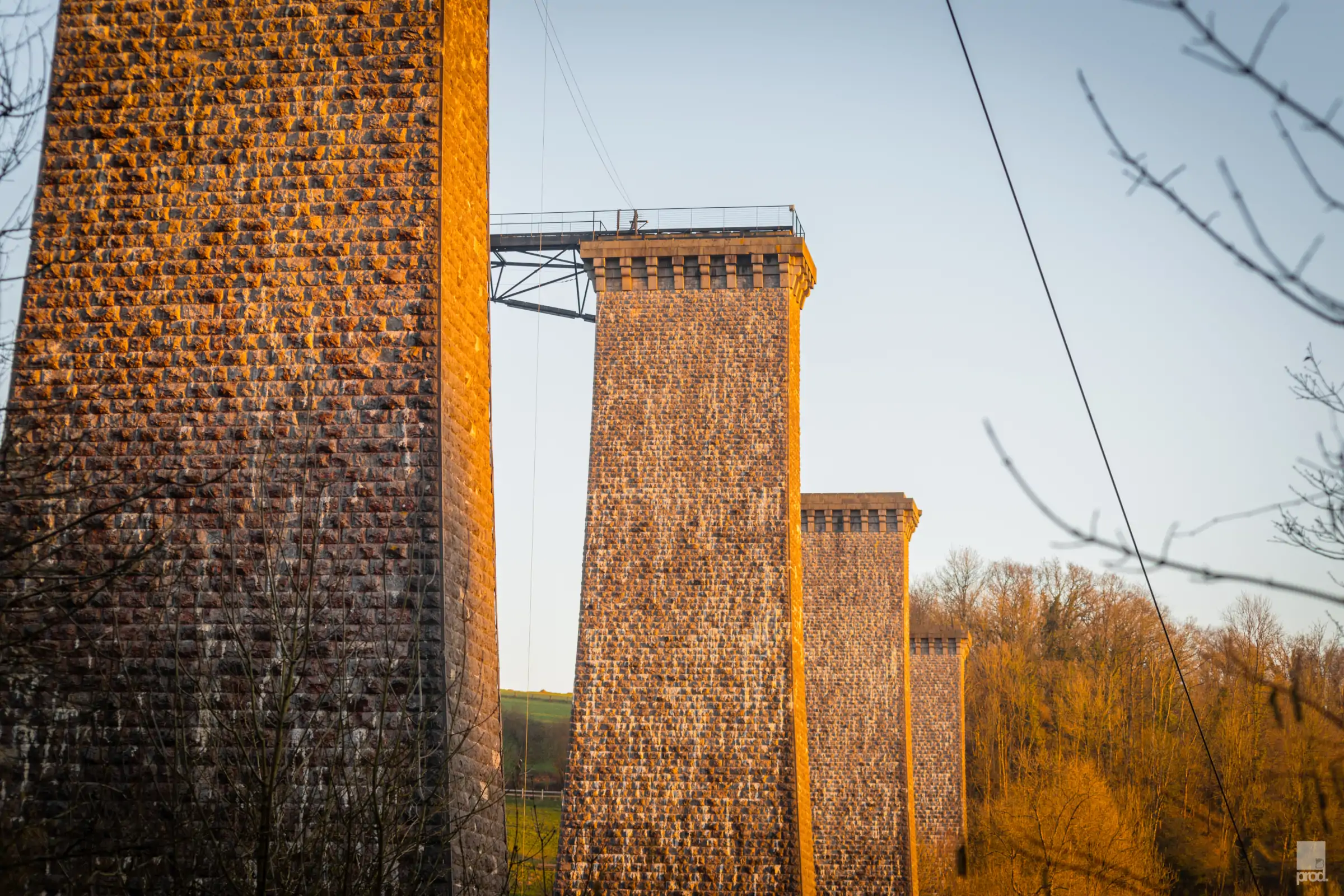

The design
The structure was 364 m long and reached a height of 61 m. It rested on five hollow piers made of stone from Montmartin-sur-Mer, extracted from the Gravelets quarry and assembled with a mortar of lime and crushed sand from Mont Bény.
The total cost of the viaduct was 1 570 000 french francs of the time, the equivalent of several million euros today.
During the Second World War, the work was targeted by the Allies : more than 500 bombs were dropped by the Royal Air Force and its legendary Mosquito aircraft, without succeeding in destroying it. Later used by American troops. After the railway line was closed in 1960, the viaduct remained abandoned and was considered dangerous.

